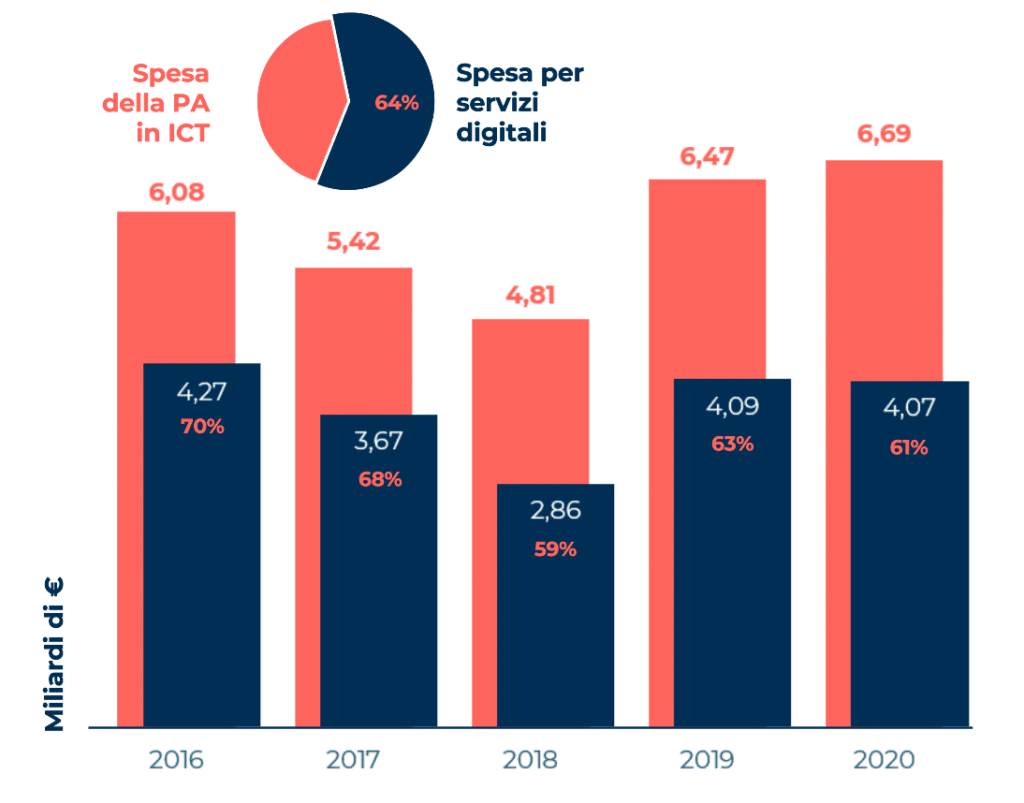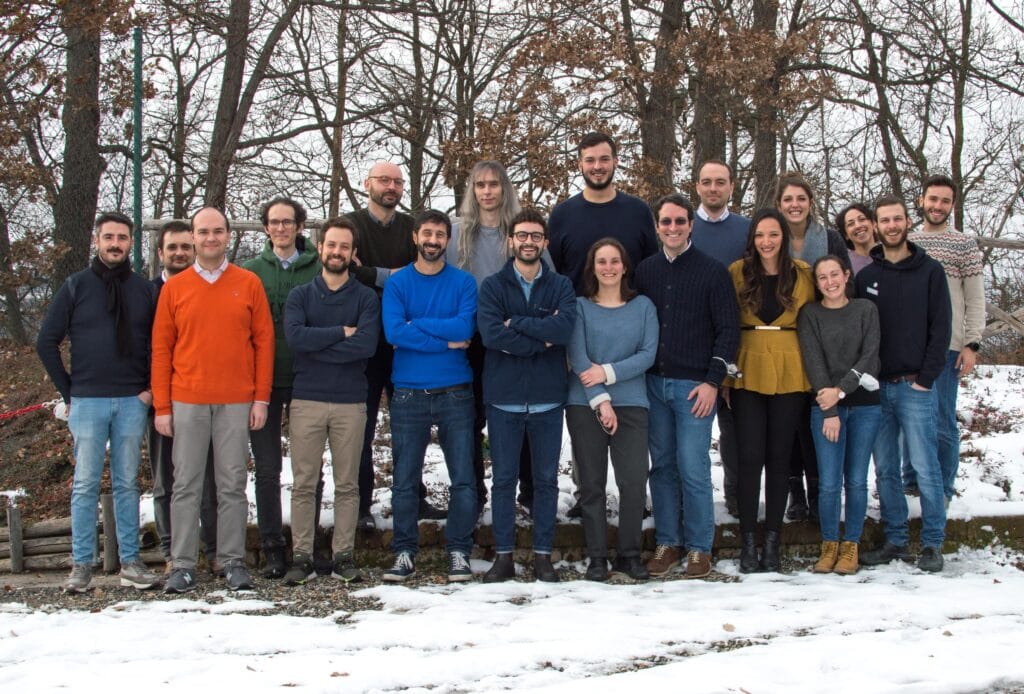Public administration investments in digital are increasing but photography is still a blurred model of the desirable image, also in light of the objectives of the PNRR. This is confirmed by a joint research byDigital Agenda Observatory of the Politecnico di Milano e ContrattiPubblici.org, a platform for business intelligence in the PA, created by startup torinese Synapta.
The Public Administration invests in digital but it is still not enough
Adopting a methodology set by Federico Maffezzini, senior advisor specializing in public procurement and market analysis, the analysts of Synapta and the Politecnico di Milano have set themselves the goal of qualify spending on digital solutions and services, with a bottom-up and analytical approach based on the analysis of individual public contracts. At the heart of the research is the public procurement, that is the set of all the procedures for the purchase of goods and services by the Public Administration in the broad sense, from local authorities to the central PA, passing through subsidiaries and investee companies.
Contrattipubblici.org, the most complete database and search engine of Italian public contracts for transparency and efficiency in public procurement, together with the experts of PoliMi, photographed the trend of public spending on digital services, showing in recent years a growth that is less than that which could be expected for such a strategic sector for the growth of the country.

Between 2016 and 2018, the new contracts awarded fell from 4.27 to 2.86 billion, and the growth of 2019 (to 4.09 billion) did not continue in 2020, stable at 4.07 billion.
This is consistent with the analyzes of the Digital Agenda Observatory of the Politecnico di Milano at an international level: public spending in the ICT sector (which includes that on digital services) was equal to only 115 euros per capita last year, a figure decidedly below the average of the large counterparts to Italy, many of which invest two or three times as much. The United Kingdom leads with 323 euros, ahead of Germany (207), followed closely by France (186).
The pandemic was the first catalyst
Another critical point concerns public tenders for digital services launched in 2020, for half of which a final award is not yet known. Last year, the interest of the PAs in smart working, blockchain e droni but these items must be further qualified using the data of ContrattiPubblici.org: for example, the most important investments related to smart working concerned the purchases of laptops (for 189 million euros, with an increase of 178% compared to 2019), giving an undoubtedly concrete answer, but also of a very emergency type to the demand for remote work linked to the fight against Covid-19.
According to research 67% of the entire digital services market is concentrated in the hands of 50 suppliers and concentration increases in more sectoral areas: for example, the top ten players cover 47% of eProcurement spending (that is, digital platforms for the management of public purchases). An interesting focus also concerns public spending from 2016 to 2020 in SPID, ANPR and pagoPA: 79% of it is concentrated in the hands of 10 suppliers.

The regulatory environment does not help. Instability, due to continuous legislative changes, the fragmentation and incompleteness of the rules, as well as the coexistence of provisions of opposite sign are the enemies facing public procurement. The pitfalls are many but the challenge is open.
For example, in Italy there are still many disparities at a geographical level: between 2016 and 2020, spending on digital services by Local Authorities (Regions, Municipalities, Local Health Authorities) was 1.59 billion in the North-West, almost 100 euros each, compared to 0.96 in the South and Islands, less of 50 euros per capita. Furthermore, the pandemic has certainly not helped to optimize and rationalize processes, although it has forced some “emergency” steps forward on some issues related to digital, while the opportunities of PNNR, if not managed effectively, risk turning into a danger .















Leave a Reply
View Comments